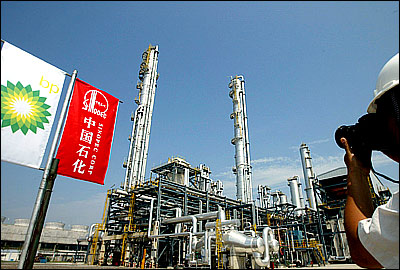The electricity industry is the fastest growing of all industrial sectors. At the end of 2005, the installed capacity of generators totaled 510 million kw, and the total generated electricity came to 2,474.7 billion kwh, ranking second in the world. Thermal power is the mainstay of electricity generation in China; while the installed capacity of hydro power generators exceeds 100 million kw, ranking first in the world; besides the 8.7 million kw capacity of nuclear power generators already producing or under construction, China will build more nuclear generating facilities with 36 million kw capacity before 2020.

Power grid construction has entered its fastest ever development; main power grids now cover all the cities and most rural areas, 500-kv grids beginning to replace 220-kv grids for inter-province and inter-region transmission and exchange operations. An international advanced control automation system with computers as the mainstay has been universally adopted, and has proved practical. Now, China's power industry has entered a new era featuring large generating units, large power plants, large power grids, ultra-high voltage and automation.
Starting in the 1980s, China has invested hugely into creating a number of large-scale modern coalmines, resulting in a gradual increase in coal output, maintained at over one billion tons a year since 1989. China's coal industry now has the ability to design, construct, equip and administer 10-million-ton opencast coalmines and large and medium-sized mining areas. Coal washing and dressing technologies and capability have constantly improved and coal liquefaction and underground gasification are being introduced.
Petroleum and natural gas are important energy resources. For nine years running from 1997 to 2005, annual crude oil output exceeded 160 million tons, ranking fifth in the world. Oil industry development has accelerated the growth of local economies and related industries, such as machinery manufacturing, iron and steel industries, transport and communications. In 2001, China's natural gas output exceeded 30 billion cubic meters and reached 50 billion cubic meters in 2005.
To relieve the shortage of energy supplies that fetters China's economic growth, China is developing new energy resources, such as wind, solar, geothermal, and tidal power. Its abundant wind energy resources give China the potential for mass-produced wind power. Between 2001 and 2005, the government invested 1.5 billion yuan in the wind power industry. More than 200,000 small wind generators already play an important power generation role in agricultural and pastoral areas and, according to government targets, the national installed capacity of wind generators is to increase by one million kw every year, reaching 20 million kw by 2020. Given northern China's rich wind energy resources, its wind power industry has attracted domestic and overseas investment. Asia's largest wind power station, with an investment of 1.2 billion US dollars and a capacity of one million kw, will be completed in Inner Mongolia before 2008. Meanwhile, in western China, with an average radiation flux of three kwh per day, solar energy has been widely utilized. Asia's largest demonstration base for solar heating and cooling technology in Yuzhong County, Gansu Province, has become the training center of applied solar technologies for developing countries.
In February 2005, the Standing Committee of the National People's Congress discussed and passed the China Renewable Energy Law, stipulating the responsibilities and duties of government, enterprises and users in the development and exploitation of renewable energy and establishing a series of policies and measures including systems for overall objectives, special funding and preferential taxes and levies. The Chinese government will progressively increase the ratio of consumption of the high-quality, clean and renewable energy in the gross energy consumption from 7 percent in 2005 to 13 percent in 2020.
